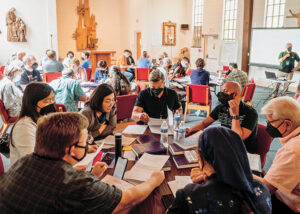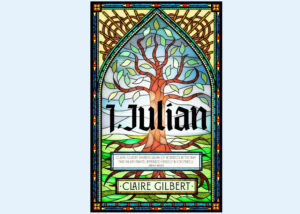The name Arab Christians use for the Bible translates literally as “The Holy Book,” and they often shorten it to “The Book.” Article 4 of the Confession of Faith in a Mennonite Perspective states: “The Bible is the essential book of the church.” What does it mean if we see the Bible as the book above other books, the essential book of our faith?
In this issue, we feature our semi-annual Focus on Books and Resources section, with a collection of titles for you to explore and read. On page 23, Nancy Frey, a teacher and pastor formerly serving in Africa, recalls how her Bible students there wanted to understand the Bible so badly that they would study for 10 hours! In the feature, author Meghan Larissa Good considers how the Bible helps shape our biblical imagination. She posits, “Through Scripture we are shaped, page by page, into the imagination of Christ.”
Here are a few thoughts on being “shaped” by the Bible.
How often do we touch an actual Bible or read its words? Not often, according to a 2013 study commissioned by the Canadian Bible Forum and the Evangelical Fellowship of Canada. The statistics show that only 14 percent of Canadian Christians read the Bible at least once a week. That’s one in seven of us. If you look at the total population, a majority of Canadians—including those who call themselves Christian—seldom or never read the Bible.
The Confession of Faith in a Mennonite Perspective states: “We commit ourselves to persist and delight in reading, studying and meditating on the Scriptures.” A lofty and desirable goal.
Maybe it starts with handling the actual book. When I lived in the Middle East, I witnessed a new kind of respect for the Bible. Middle Eastern Christians take great care with the actual book: They don’t place a Bible on the floor or on any other dirty surface, and they never take a Bible into the bathroom. In western societies, some worship services include a procession in which a highly decorated copy of the gospels is held up for all to see. The whole congregation stands when the gospels are read, as a witness to the centrality of Christ.
Closer to home, we can make at least one Bible visible and available in the spaces where we live our daily lives. We can carry an actual Bible to church, or our congregation can provide pew Bibles within easy reach. When Scripture is read in a worship service, we can open “The Book” and follow along.
As Anabaptists, we want to engage with all parts of the Bible—through worship, individual and group studies, and spiritual formation. We should be conscious of how various church activities provide opportunities for the Bible’s contents to be seen, heard, read, discussed, taken to heart and lived out.
Another way we allow the Bible to shape us is to hear its stories. The good narratives contained in the Bible continually surprise me. In this holy book, we see one grand story of how God and humans built—and re-built—their relationship. It portrays believable characters, with dreams, temptations and challenges. Challenging plots and surprise endings. Emotions ranging from reverence and awe, to anger and shame. This story invites us to walk alongside our spiritual ancestors as we, too, grow in our relationship with the story’s author.
For me, this has meant engaging in biblical storytelling, learning the ancient narratives by heart and telling those stories orally. An international movement within the broader Christian church helps storytellers tell those ancient stories with understanding and passion.
To see how to get involved, check out the Network of Biblical Storytellers International (nbsint.org). A Canadian chapter meets annually each fall (facebook.com/biblicalstorytellingcan).
You may have testimonies to share about how the Bible has shaped you as a follower of Christ. We’d love to hear them. In the meantime, consider this your invitation to “persist and delight” in the church’s essential book.
New columnist
The column “The Church Here and There” debuts this issue. Columnist Arli Klassen comes with experience in several Mennonite settings, and she brings a vision for connecting Anabaptist siblings in many places around the world. Arli writes, “I would like to both educate and reflect on the connections and relationships among churches at all levels.” We look forward to hearing her perspective.
Read more editorials:
Stories told and untold
Disciples and citizens
The zucchini principle
Digital church
Broad prayers in a time of fear









Leave a Reply
You must be logged in to post a comment.